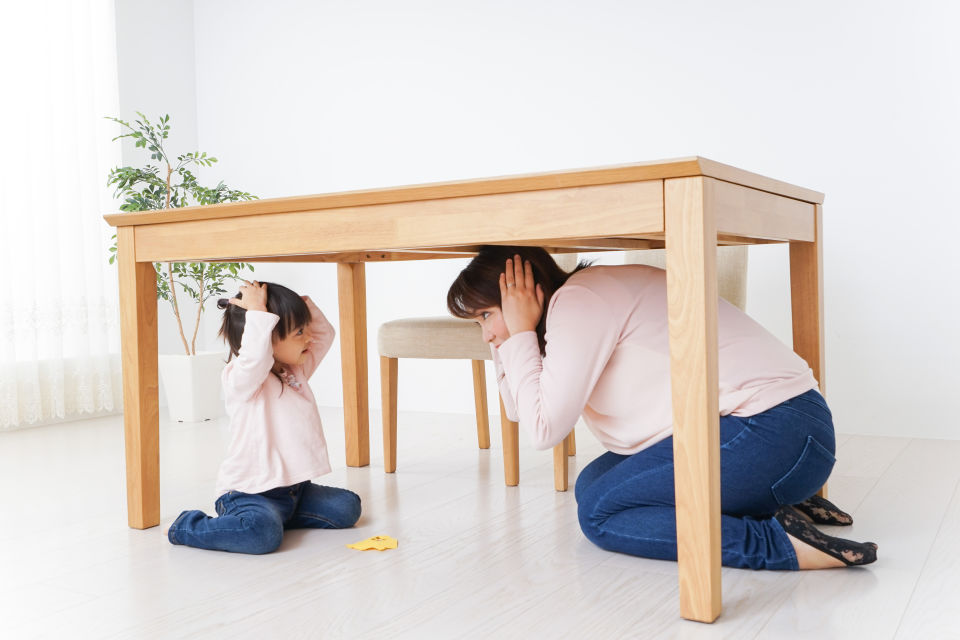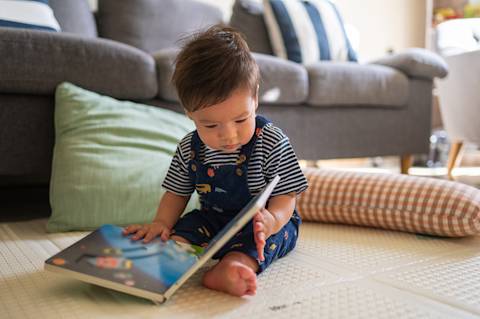California's natural beauty often comes hand-in-hand with some unpredictable natural disasters. As a parent or caregiver, helping your little ones prepare for a natural disaster is important in keeping them safe should one of these events occur.

It’s important to teach your child what to expect in any situation, including if a natural disaster strikes. Our goal in providing these tips is to help you create a safe and stable environment for your child. Before we dive into the specific plans for each natural disaster, there are some general tips that can help you prepare your child:
Discuss the importance of following emergency instructions from authorities and school teachers during emergencies.
Assure your children that it's OK to feel scared or unsure during emergencies. Let them know that expressing their feelings with a trusted adult can help.
Turn practice exercises into fun games to help children get familiar with emergency responses. This will help them respond confidently and quickly when faced with real situations.
You can try preparing simple and clear visual aids (like flashcards or posters) for children related to emergency procedures, guiding them step-by-step on what to do during various situations. SafeWise has some great options to check out.
California is situated on numerous active fault lines, making it essential to prepare for potential earthquakes. When explaining earthquakes to your child, here’s some child-friendly language you can use: “Sometimes, the ground beneath us can move and shake. It's just a natural event that happens as the Earth shifts. Remember, we can stay safe by following our safety plan.”
Babies:
Ensure their crib is secure and away from windows or heavy furniture that could fall.
Store a portable crib in an easy-to-reach location to use if an earthquake strikes during the day.
Toddlers:
Practice earthquake safety drills together, teaching them to “drop, cover, and hold on.”
Make it fun by turning it into a game or using a favorite stuffed toy to demonstrate the steps.
Preschoolers:
Continue practicing earthquake safety drills.
Discuss earthquake safety measures at school or daycare to assure them they have a safe plan in place.
In California, dry and windy conditions can contribute to rapid fire growth. If you have a toddler or preschooler, you can explain wildfires to them using the following language: “Wildfires are big fires that happen in nature, usually during hot and dry seasons. If we stay prepared, follow safety rules, and listen to the grown-ups, we can keep ourselves safe.”
Babies:
Maintain a well-stocked emergency kit ready for evacuation, including essentials like diapers, wipes, and formula.
Toddlers:
Familiarize them with the sound of a smoke detector, and explain what to do if they hear it.
Introduce the concept of a family meeting spot outside the home.
Preschoolers:
Create an age-appropriate escape plan for your home and practice it together.
Encourage them to ask questions about wildfires so they can better understand the dangers and how to stay safe.
Flooding and mudslides can occur suddenly during periods of heavy rainfall or melting snow, especially in areas with steep slopes or a lack of vegetation. In California, events like wildfires can increase the risk by removing plants that would typically help absorb water and keep the soil in place. A preschooler- or toddler-friendly explanation can be: “Sometimes, when we have too much rain or water, it can cause lots of water to build up or mud to swoosh down the mountainside. We can stay safe inside and follow our safety plan.”
Babies:
Keep an emergency kit, similar to the wildfire kit mentioned earlier.
Elevate your baby's crib and belongings if you live in a flood-prone area.
Toddlers:
Teach them to never play in or around water during storms or heavy rainfall.
Explain why it's important to stay indoors during these weather events.
Preschoolers:
Discuss the causes of floods and mudslides and their potential dangers.
Teach them how to seek higher ground if they're ever caught in floodwaters.
House fires can happen for various reasons, such as lit candles left unattended, electrical problems, or kitchen accidents. While not as widespread as natural disasters, house fires can still be devastating and life-threatening. Child-friendly explanations for toddlers and preschoolers can include: “A house fire is when something accidentally catches fire inside our home. It's essential to always be careful and follow the safety rules we learn together so that we can keep our home safe and sound.”
Babies:
Baby-proof your home and keep all flammable materials out of reach.
Toddlers:
Teach them the “stop, drop, and roll” technique in case their clothes ever catch fire.
Introduce the concept of a fire escape plan, and emphasize the importance of leaving the house immediately if there's a fire.
Familiarize them with the sound of a smoke detector, and explain what to do if they hear it.
Preschoolers:
Practice your fire escape plan together.
Educate them about the dangers of playing with matches, candles, or lighters.
By taking these steps and using these child-friendly explanations, you are actively creating a safe environment for your child and giving them the knowledge they need to handle California's unpredictable natural disasters. As much as possible, keep your language factual, friendly, and approachable when discussing these events.






